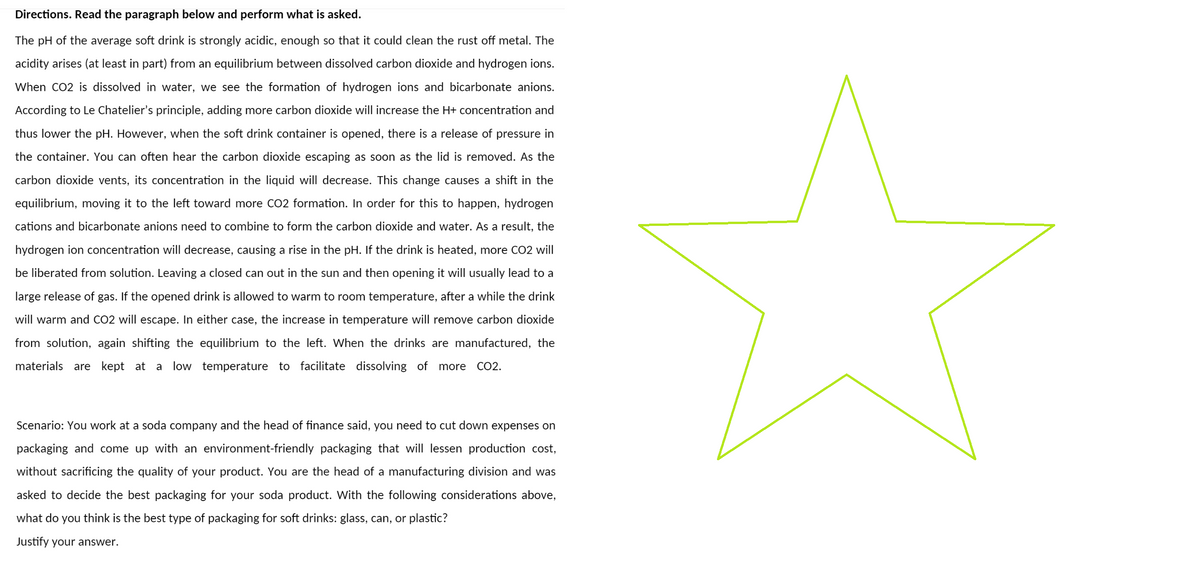acidity arises (at least in part) from an equilibrium between dissolved carbon dioxide and hydrogen ions. When CO2 is dissolved in water, we see the formation of hydrogen ions and bicarbonate anions. According to Le Chatelier's principle, adding more carbon dioxide will increase the H+ concentration and thus lower the pH. However, when the soft drink container is opened, there is a release of pressure in the container. You can often hear the carbon dioxide escaping as soon as the lid is removed. As the carbon dioxide vents, its concentration in the liquid will decrease. This change causes a shift in the equilibrium, moving it to the left toward more CO2 formation. In order for this to happen, hydrogen cations and bicarbonate anions need to combine to form the carbon dioxide and water. As a result, the hydrogen ion concentration will decrease, causing a rise in the pH. If the drink is heated, more CO2 will be liberated from solution. Leaving a closed can out in the sun and then opening it will usually lead to a arge release of gas. If the opened drink is allowed to warm to room temperature, after a while the drink will warm and CO2 will escape. In either case, the increase in temperature will remove carbon dioxide from solution, again shifting the equilibrium to the left. When the drinks are manufactured, the materials are kept at a low temperature to facilitate dissolving of more CO2. Scenario: You work at a soda company and the head of finance said, you need to cut down expenses on packaging and come up with an environment-friendly packaging that will lessen production cost, without sacrificing the quality of your product. You are the head of a manufacturing division and was asked to decide the best packaging for your soda product. With the following considerations above, what do you think is the best type of packaging for soft drinks: glass, can, or plastic? Justify your answer.
Ionic Equilibrium
Chemical equilibrium and ionic equilibrium are two major concepts in chemistry. Ionic equilibrium deals with the equilibrium involved in an ionization process while chemical equilibrium deals with the equilibrium during a chemical change. Ionic equilibrium is established between the ions and unionized species in a system. Understanding the concept of ionic equilibrium is very important to answer the questions related to certain chemical reactions in chemistry.
Arrhenius Acid
Arrhenius acid act as a good electrolyte as it dissociates to its respective ions in the aqueous solutions. Keeping it similar to the general acid properties, Arrhenius acid also neutralizes bases and turns litmus paper into red.
Bronsted Lowry Base In Inorganic Chemistry
Bronsted-Lowry base in inorganic chemistry is any chemical substance that can accept a proton from the other chemical substance it is reacting with.
MAKE SURE IT IS ORIGINAL AND NOT PLAGIARIZED. DO IT TYPEWRITTEN. I WILL UPVOTE IF IT IS COMPLETE. PLEASE SKIP THIS IF YOU HAVE ALREADY ANSWERED THIS.

Trending now
This is a popular solution!
Step by step
Solved in 2 steps with 1 images









